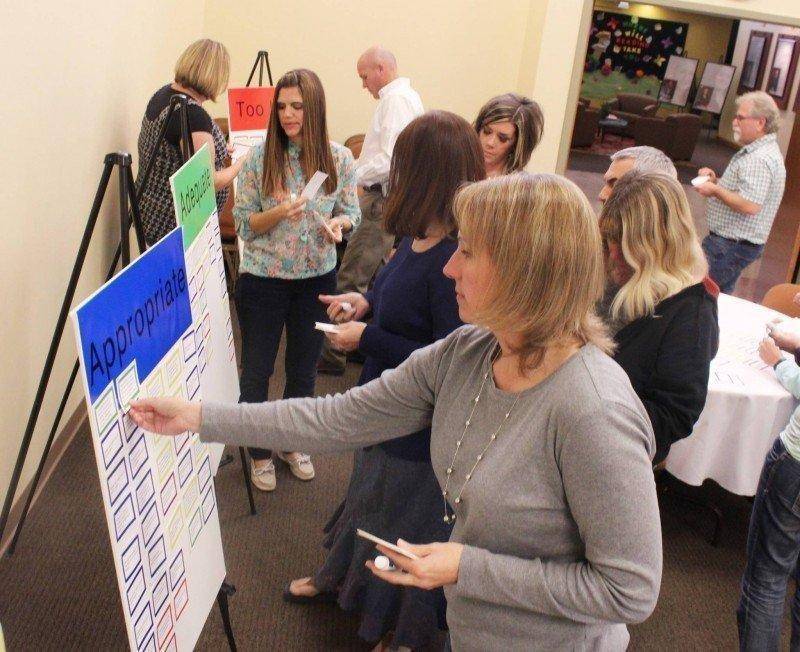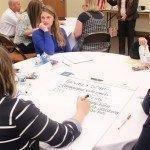Those who attended the session placed stickers on various boards noting how the district is performing.
On April 18 the Carbon School District Board of Education hosted a meeting of concerned citizens and parents at the district office to find out how people feel about the direction the school district is heading concerning its mission and to get ideas to move into the future.
The meeting was attended by about 20 people who spent over three hours working on concepts for improvement and visions for the upcoming school years.
The meeting was led by members of the Board of Education, with Superintendent Steve Carlsen and Business Manager Darin Lancaster attending to lend information as needed.
“The best way to predict the future is to look at the past,” said Board President Wayne Woodward as he began the meeting.
The board asked those in attendance to consider the following:
- Anticipate educational requirements that often include training or new equipment.
- To help minimize problems like teacher shortages in the district.
- To help predict future building repairs and possible replacements for buildings.
- To Anticipate changes in protocols and policies.
- To help forecast and plan for major expenditures.
Board member Lee McCourt then introduced the board and the administrators that were present, to the group that had attended.
With that done, and charged with using the past and present to help with future planning, the group was given a series of sticker cards that they could place on four different boards that were marked to discern how the district is presently doing in various areas. Those boards listed were labled too much, approriate, adequate and too little. Blue lined cards concerned transportation (busing), red line cards had statements about school maintenance and facilities, purple lined cards concerned amounts of information and classroom logistics, green lined cards concerned extracurricular activities, and yellow line cards were about school personnel and their effectiveness.
“What we want to know is how Carbon School District is doing today,” said Board Member Melanie Fausett. “We want to set some norms for the discussion tonight.”
With about 15 minutes of time elapsed many of the boards were full of stickers with the most cards being placed on the adequate and appropriate boards and the too much board having only a few. The too little board was also covered with cards.
“The question of what is a enough and what isn’t can be answered here,” said board member Kristen Taylor. “This is great information that we can keep. We plan on having a day long work session in July to discuss our plans and these boards will be used in that session.”
The group was then asked to act as table committees, pick an idea from the board and then expound on that idea by placing what they thought on a paper chart. Then each table made a presentation on the ideas they came up with. Some of the tables came up with some strong criticisms of the district on certain items. This led board members to ask questions of the group and they found the answers that were returned to be valuable.
In the final part of the meeting Board Member Jeff Richens asked the group to put out there anything they would like the district to do or improve upon, without regards to the cost. The group spent a great deal of time on this list as Richens and Woodward put the submitted ideas on the white board. Some of the topics included better training facilities for athletics, performance based pay for teachers, less testing and giving teachers the right to teach what is needed, a school liaison for parents, AP classes at the middle school level, consulting with local businesses on what they need from educational programs and better tasting school lunches, among many others. When Lancaster and Carlsen were asked if there were any items on the list that were either out of question or not legal to do the only one they really felt that could not be accomplished given the right resources was the school lunch topic. That topic also set off one of the most lengthy discussions of the evening.
“School lunch is the one of the most highly regulated federal programs we have,” said Lancaster. “They set the standards of what can be in meals such as fat and sugar.”
In the end the board assured the group that the information gathered will help them to make some future decisions about the district’s direction and future.
- Table committees were establishing at the meeting and they came up with concerns about various topics that the district should consider for action. They then presented their charts to the board for further group discussion.


